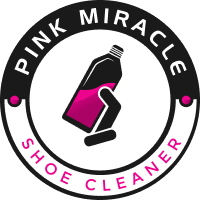We always want our shoes to keep their color, most especially the white ones. But we can observe that the color of the shoes we love is changing. What’s worse is that we don’t have any idea why it’s happening. The fact is, we can’t stop them from discoloration. It’s a part of the wear and tear process of any object. Environmental and chemical factors contribute to these changes.
Factors that Cause Shoes to Turn Yellow
Footwear becomes yellow because of oxidation, a chemical change that happens during the combination of a substance with oxygen.
- Given the amount of oxygen around us, the discoloration process of our shoes is essentially, natural.
- Take for example a metal. Once it’s exposed to water which contains oxygen, it eventually develops rust around it.
- The effect of exposure to oxygen applies similarly to your shoe discoloration. The only difference is the material used. Shoes are typically made of canvas or leather, so the change in color depends on the oxidation or chemical reaction to the cloth or leather.
- Bleaching also turns your shoes yellow over time due to the chemical change done by the bleach.
- Remember that once the bleach destroys the color of your shoe, it is irreversible.
- Be cautious when washing your shoes even if it’s white. Pouring bleach all over it will just cause it to create yellow stains.
- The material used for your shoes also contributes to its discoloration mainly, on the kind of fabric used on the pump.
- There are specific fabrics or materials that create a yellow crack or fade once it gets worn out.
- Vintage shoes and those that had been stored for a long time are more likely to appear faded or became yellowish—another manifestation of the wear and tear principle.
How to Prevent Shoe Discoloration
If we want our shoes to keep its lovely color, here are some ways to prevent it from discoloration or at least, slow the entire process of oxidation:
1. Wrap the shoes.
- Use a cling wrap (cellophane) to protect the pump from environmental reactions that contribute to the change in its color.
- It will also help them from getting dirt or fade from people handling the boots.
2. Keep the shoes stored in an air-conditioned room.
- The same principle applies when we place our food in the fridge. Storing footwear in a cool, dry area delays the deterioration and preserves it.
- Everything is designed to decay over time. If we want to keep certain things in its original form and shape, then take the necessary steps to delay the process.
- If your shoes are expensive and valuable, it’s always worth the extra dime to have it maintained, and to keep it nice and presentable.
- Keep shoes away from warm light. This is pretty much similar to keeping it in a cool, dry area. However, the critical factor is to keep it away from light (sunlight) that emits so much heat.
- We should not keep it in a place that dries it up quickly to avoid the shoes cracked, faded and discolored.
- To be safe, find an area in your home where you can store your shoes. Remember, temperature matters. Choose a place where it’s kept dry and cool for a long time.
4. Use Freezer bags
- If cellophane wraps are not your type of shoe protection, you can always opt for freezer bags.
- Storing your shoes in freezer bags will keep it fresh.
5. Add Silica Packs
- You may even add packs of silica to protect it even further.
- Silica is desiccants that adsorb and holds water vapor. When shoes are stored in a container with silica, it prevents unnecessary moisture to develop. Thereby, limiting the growth of molds and prolonging their shelf life.
- Perhaps, you’ll wonder how you can get your hands on those silica packs. Silica packs or gels are found in all sorts of products. Generally, it comes with the new packages you purchase.
- For example, if you happen to buy a new pair of shoes, check the box and it’s there! Remember, these small silica packs can prolong the life of your shoes, so don’t take them for granted.
- Although silica gels are not necessarily toxic, it is still essential to keep it away from children as it is not edible and could cause choking.
Takeaway
There are things beyond our control. Even with the advent of nifty hacks and advancements in technology, nature will still overrule. We can’t help it. However, we can have a workaround. To combat the natural process of oxidation as one of the forces of nature, the tips above can help you slow down its effects on our footwear. Remember, our shoes bring us to places. Take care of it just as much as it takes care of our feet.
The post Why Do Shoes Turn Yellow Over Time? appeared first on The Pink Miracle.